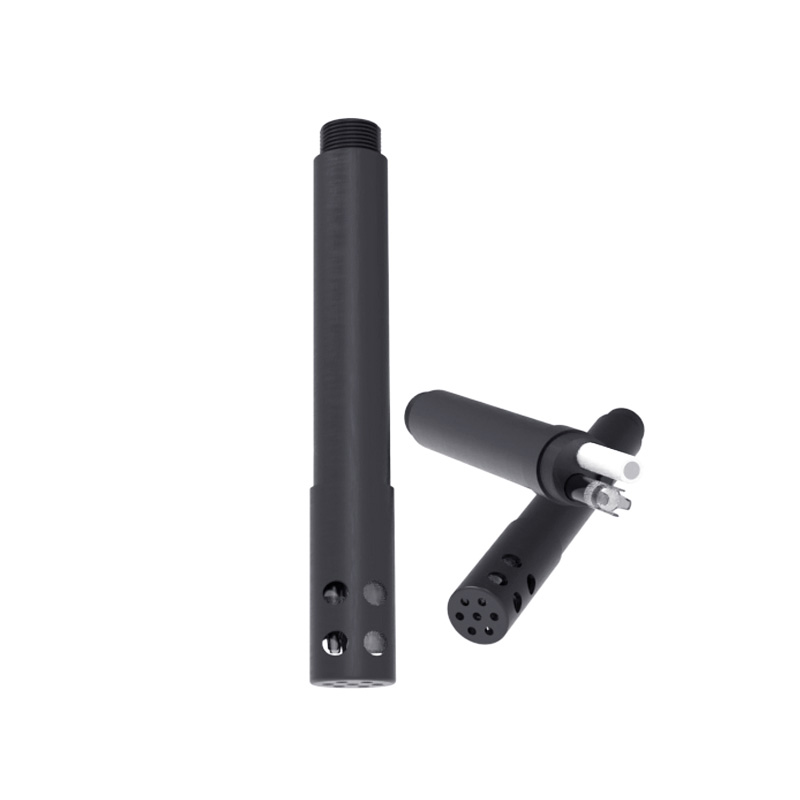Shandong Fengtu IOT Technology Co., Ltd
Sales Manager:Ms. Emily Wang
Cel,Whatsapp,Wechat:+86 15898932201
Email:info@fengtutec.com
Add:No. 155 Optoelectronic Industry Accelerator, Gaoxin District, Weifang, Shandong, China

Sales Manager:Ms. Emily Wang
Cel,Whatsapp,Wechat:+86 15898932201
Email:info@fengtutec.com
Add:No. 155 Optoelectronic Industry Accelerator, Gaoxin District, Weifang, Shandong, China

Model:FT-S14
Brand:fengtu
1. Chloride Ion Sensor Application Environment Description
The S14 Chloride Ion Sensor uses an ion-selective electrode to test free chloride ions in water. It is fast, simple and economical, and can meet the measurement requirements of chloride ions in most industrial environments.
Signal output: RS-485 (MODBUS-RTU)
2. Technical Parameters of Chloride Ion Sensor
| Measuring principle | Ion selection method |
| Output method | RS-485 (MODBUS-RTU) |
| Range | 0-3500.0mg/L |
| Resolution | 0.1mg/L |
| Accuracy | ±5%; ±0.3℃ |
| Shell material | ABS |
| Cable length | 5m |
| Supply voltage | DC12-24V(0.4W@12V) |
| Calibration method | Two-point calibration |
| Measurement environment | 0-50℃(no freezing) |
| Waterproof grade | IP68 |
| Installation | Immersion installation, NPT3/4 thread |
3. Chloride Ion Sensor Maintenance and Care
In order to obtain the most stable results, it is recommended to immerse the ion selective electrode in a standard solution (usually 100ppm) for 10-15 minutes before measurement until the reading is stable.
In order to obtain high-precision results, it is recommended to repeat these steps: remove the electrode from the standard solution, rinse, blot dry, and then immerse in the standard solution (immerse for at least 2 minutes to obtain a stable reading) to ensure that the electrode is properly rinsed and pre-conditioned.
When the electrode is used for the first time or after long-term storage, it needs to be soaked in the standard solution overnight or even 48 hours to get a stable reading. After pretreatment, spray the electrode with deionized water and carefully dry it with absorbent paper instead of wiping it dry.
When the sensor is not in use, place it vertically and do not place it horizontally for a long time.
When the sensor is not used for a long time, the electrodes should be kept dry.
As an intelligent lightweight device integrating data observation, recording, and analysis, the Portable Weather Station has become an "essential equipment" in the fields of scientific research, military affairs, and meteorological monitoring, easily meeting various mobile meteorological m...
When the fog is thick, it is particularly difficult to navigate ships in places like the Huangpu River where the waterway is narrow and the navigation conditions are complex. Due to the heavy fog, the pilots can hardly see the ships in the distance and the objects on the shore. At this time, relying...
Portable Weather Stations are highly integrated mobile monitoring devices specifically designed for temporary observation scenarios such as field operations and emergency response. They can collect core meteorological data like wind speed, wind direction, and temperature in real-time, support data s...
With the continuous advancement of transportation infrastructure construction, tunnels are playing an increasingly important role in the modern transportation network. However, the special environment inside the tunnels poses many challenges to driving safety, and the issue of visibility is particul...